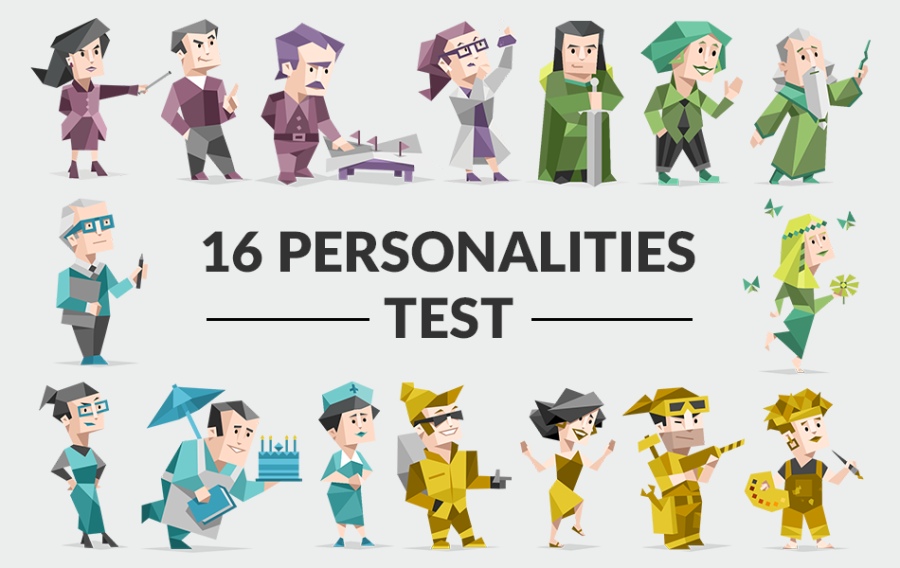A Quick Guide
This article delves further into the Myers-Briggs Type Indicator (MBTI), a widely used personality assessment tool. It discusses the fundamentals of MBTI, the sixteen personality types, the four dichotomies that are the foundation of these types, and the applications of MBTI in many disciplines.
Introduction to the MBTI
The Myers-Briggs Type Indicator (MBTI) is one of the most popular personality assessment tools in the world. The MBTI, created by Isabel Briggs Myers and her mother, Katharine Cook Briggs, is based on Carl Jung’s idea of psychological types. It seeks to classify people into one of sixteen distinct personality types, each defined by a unique set of preferences in four dichotomies.
The Four Dichotomies
The MBTI splits personality into four dichotomies, each expressing two opposing preferences. These dichotomies are:
Extraversion (E) vs. Introversion (I)
- Extraversion (E): Social contacts and external activities energize extroverts. They are outgoing, outspoken, and eager.
- Introversion (I): Introverts derive energy from solitary hobbies and internal thoughts. They tend to be reserved, thoughtful, and introverted.
Sensing (S) vs intuition (N)
- Sensing (s): Sensors concentrate on current events, precise information, and details. They like practical, hands-on experiences and rely on all five senses.
- Intuition (N): Intuitive thinkers concentrate on future possibilities, patterns, and abstract theories. They enjoy intellectual thinking and are more focused on the broader picture.
Thinking (T) vs. Feeling (F)
- Thinking (T): Thinkers value logic, objectivity, and rationality. They want to make decisions based on objective criteria and seek fairness.
- Feeling (F): Feelers prioritize emotions, values, and personal considerations. They prefer to make empathy-driven decisions and seek harmony.
Judging (J) vs. Perceiving (P)
- Judging (J): They favor structure, organization, and clear plans. They prefer to have decisions made and jobs finished.
- Perceiving (P): Perceivers value flexibility, spontaneity, and keeping choices open. They prefer to adapt to new information and changes.
Sixteen Personality Types
Combining preferences from each of the four dichotomies produces sixteen distinct personality types. Each type has a four-letter code, such as ENFP or ISTJ. Here’s a quick summary of each type:
- ISTJ (Inspector): Practical, fact-based, and reliable.
- ISFJ (the protector): Warm, altruistic, and meticulous.
- INFJ (the Advocate): Insightful, inspirational, and reserved.
- INTJ (Architect): Innovative, strategic, and independent.
- ISTP (The Craftsman): Bold, practical, and impulsive.
- ISFP (Artist): Sensitive, expressive, and engaging.
- The INFP (The Mediator): Idealistic, compassionate, and inquiring.
- INTP (The Thinker): Analytical, original, and intellectual.
- ESTP (the entrepreneur): Energetic, insightful, and straightforward.
- ESFP (the performer): Enthusiastic, friendly, and playful.
- ENFP (The Campaigner): Imaginative, enthusiastic, and free-spirited.
- ENTP (the debater): Smart, inquisitive, and innovative.
- ESTJ (Executive): Organized, aggressive, and realistic.
- ESFJ (Consul): Caring, social, and loyal.
- ENFJ (the protagonist): Charismatic, inspirational, and altruistic.
- ENTJ (Commander): confident, strategic, and decisive.
Applications of the MBTI
The MBTI is used in a variety of fields, including.
Personal development. Understanding one’s personality type can help people identify their own strengths and areas for improvement, increasing self-awareness and personal effectiveness.
Career counseling. The MBTI can help uncover jobs that match an individual’s natural tendencies, increasing job happiness and performance.
Team building. Understanding team members’ personality types can help organizations enhance communication, collaboration, and conflict resolution.
Relationships. The MBTI can provide insights into interpersonal dynamics, assisting individuals in navigating and improving their personal relationships.
Strengths of the MBTI
Enhanced self-awareness. The MBTI promotes a deeper understanding of oneself and others, resulting in personal growth.
Improved communication. People can engage more efficiently if they understand diverse communication styles.
Career guidance. The MBTI provides vital insights into career planning and growth, assisting individuals in finding meaningful positions.
Limitations of MBTI
Oversimplification. Critics claim that the MBTI’s binary options oversimplify human personality, which is more nuanced and complicated.
Lack of scientific validation. Some studies criticize the reliability and validity of the MBTI, claiming that it does not reliably measure stable personality traits.
Potential for stereotyping. There is a risk of utilizing MBTI to categorize people, limiting their perceived potential and abilities.
Key Takeaway
The MBTI is a well-known tool that provides useful insights into personality types and preferences. While it has limitations, it provides substantial benefits in terms of personal development, career counseling, team building, and managing relationships. Individuals and organizations can use MBTI to improve self-awareness, communication, and collaboration.
References
https://www.scirp.org/reference/referencespapers?referenceid=2122805https://www.thesap.org.uk/articles-on-jungian-psychology-2/about-analysis-and-therapy/typology/



 Healing Your Inner Child: A Short Guide
Healing Your Inner Child: A Short Guide  What You Need to Know About Trauma & its effects
What You Need to Know About Trauma & its effects  Dealing with a Narcissistic Parent: Strategies and Support
Dealing with a Narcissistic Parent: Strategies and Support  Understanding the Big Five Personality Traits
Understanding the Big Five Personality Traits  Body Image: what it entails and how it affects you
Body Image: what it entails and how it affects you  Self-esteem: What is it and how it affects you
Self-esteem: What is it and how it affects you